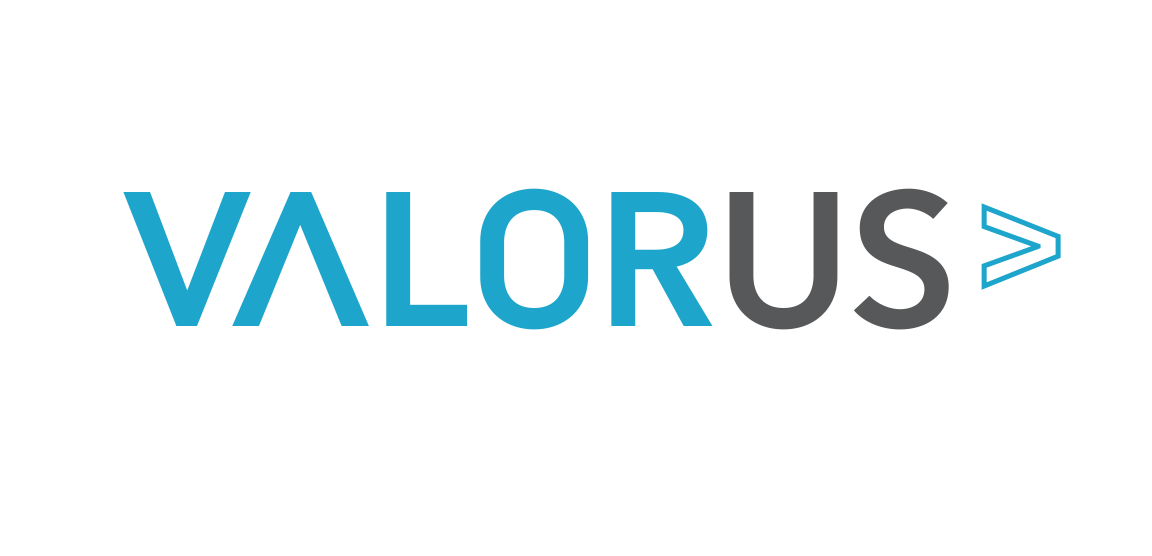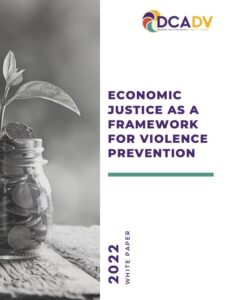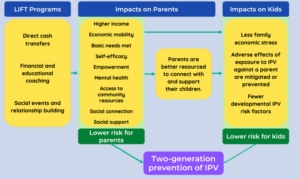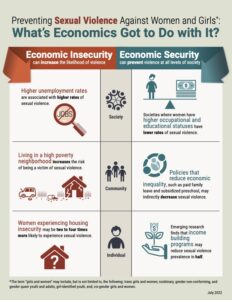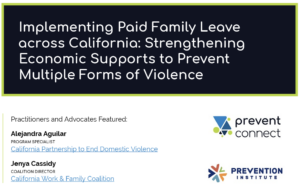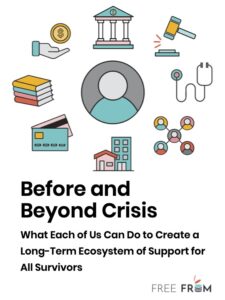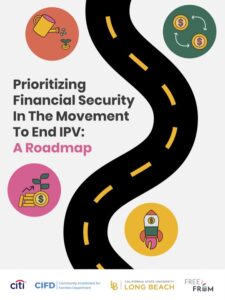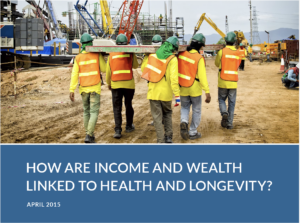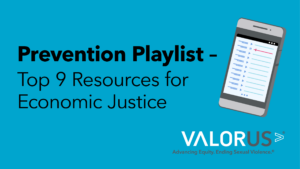
Para leer este blog en español, ingresa aquí.
California’s strides in implementing increased paid family leave are some of many initiatives nationwide that reveal the acknowledgment between financial stability and safe, thriving communities. Individuals, communities, organizations, and the government are implementing effective transformational changes to create a society focused on empathy and care.
For information on how to implement transformational change in your community by focusing on increasing economic stability, check out VALOR’s top 9 favorite economic justice resources:
1. ECONOMIC JUSTICE AS A FRAMEWORK FOR VIOLENCE PREVENTION
The Delaware Coalition Against Domestic Violence’s White Paper provides steps on how different groups, such as local organizations, big companies, workplaces, and industries, can consider making rules that help everyone have fair economic opportunities. It also suggests changing rules that prevent people from being prosperous, secure, and safe at work and in their communities. The goal of this resource is to make more people aware of economic fairness and to help them understand it better. (ver español)
2. LIFT’s Model and Two-Generation Prevention of Intimate Partner Violence
LIFT Los Angeles’s model aims to reduce generational poverty by supporting parents’ financial strength, well-being, and social connection. This resource provides direction on how to assess current economic and social supports and how to implement them to build stronger social connections that prevent IPV.
3. Financial Security for Violence Prevention
VALOR and FreeFrom, an antiviolence organization that focuses on economic security as a protective factor against violence hosted a web conference discussing how financial security can lead to violence prevention. The recording covers steps agencies can take to support economic security for survivors and topics to consider when supporting survivors.
4. Centering Survivors for Transformative Change
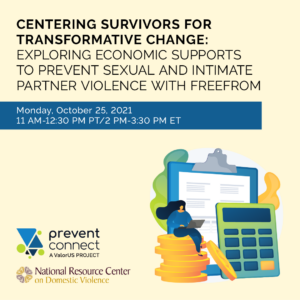
PreventConnect’s web conference, “Centering Survivors for Transformative Change: Exploring Economic Supports to Prevent Sexual and Intimate Partner Violence,” explores how communities and organizations can strengthen economic justice and financial security to support survivors and prevent future violence.
5. “What’s Economics Got to Do with It?”
California’s Department of Public Health’s “Preventing Sexual Violence Against Women and Girls: What’s Economics Got to Do With It” infographic is an easily accessible resource that outlines connections between economic security, preventing sexual violence, and creating safe communities.
Together with PreventConnect and the Prevention Institute, the California Work & Family Coalition and the California Partnership to End Domestic Violence released a report on tangible ways to improve access to paid family leave. The report provides evidence that paid parental leave can support reductions in domestic partner violence by providing opportunities for financial independence for those in unhealthy relationships to gain economic security.
FreeFrom’s “Before and Beyond Crisis” report examines how the current US infrastructure is not able to adequately support survivors and their needs, while providing steps to expand preventative education and support for survivors. One of the topics and tools the report covers is how communities and organizations focused on anti-violence can address the intersections of financial harm and economic security.
8. Prioritizing Security in the Movement to End of IPV: A Roadmap
FreeFrom’s roadmap on preventing and ending intimate partner violence expands on how individuals and groups working in the anti-violence movement can prioritize client economic security. The report also supplements the steps by providing examples of what building a financial work framework would look like and plans on implementation.
9. How are Income and Wealth Linked to Health and Longevity?
The Urban Institute and Virginia Commonwealth University’s Center on Society and Health’s brief on how income might impact a person’s health and wellness examines economic insecurity, education gaps, and other factors impacting Americans’ health and lifespan. The report, while focusing on general health and wellness, highlights the intersections between current economic trends and people’s economic security and healthcare accessibility.

